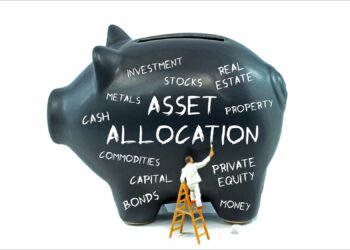High fund management fees are always a topic of hot debate, especially in recent years as interest in low-fee, passive funds continues to rise.
The argument is reasonable, but it seems the focus is often too narrowly focused on high fees alone. We believe the issue is a little more complex and it’s not high fees themselves that are the issue, but rather paying high fees for poor performance. And rightly so. Like many things in life paying fees isn’t necessarily a problem, provided you receive good value for money.
When structured correctly a performance fee can make sense for the investor in a fund and the manager of that fund. Why? Because it ensures true alignment of interests between the fund manager and the investor. Some would argue this is the only way you can ensure true value because if the manager doesn’t perform they don’t get paid. After all you can get market-like returns for a very small price from a passive index-tracking fund.
In order to work, performance fees need to be properly structured. You don’t want to see performance benchmarks set too low and you certainly don’t want to pay for performance that is simply regaining earlier poor performance. We believe a fair performance fee structure should incorporate a high watermark because this ensures the investor doesn’t have to pay a performance fee until past periods of underperformance have been regained. We feel that reflects real value for money.
But we also believe in choice and it’s why we offer two classes of the Allan Gray Australia Equity Fund – Class A units which charge a base fee and a smaller performance fee, and Class B units which charge zero base fee and a higher performance fee.
Class B units mean you can get the index return for free and only pay for outperformance i.e. if the Fund performs in line with the index, the S&P/ASX 300 Accumulation Index, or underperforms, then the fund fee is zero and we pay the running costs. The fees kick in only when the Fund starts to outperform the benchmark and this is then shared with the investor at a ratio of 65 per cent to the investor and 35 per cent to us with the fees calculated on a high watermark basis.
Typically Class B units are an alternative for investors who are sceptical of the ability of active managers to outperform the market over the long-term. If the Fund only tracks, or underperforms the index the investor pays zero fees. If the Fund outperforms the index, the investor is in profit and only then do they give up a portion of the gain as a fee.
Everyone’s perception of value for money is different. We give our clients a choice when investing in our flagship Equity Fund. They can invest in exactly the same Fund, but choose the fee structure that best suits their needs. Whichever fee class they choose, at least they know their interests and those of their manager are aligned.
A poor manager can destroy a lot of wealth and fees are only one part of that. Fees are just the cost of doing business with that manager. They do not indicate value for money in any shape or form.
There’s a lot of debate around this, but we are confident this structure makes us much more aligned with performance and our clients’ interests than merely growing assets.
There’s currently a perception in Australia that low cost or low fees is good in financial services. We think the conversation should be about value for money, not cost. After all you can’t expect the world if you’re not prepared to pay for it.
It’s not the structure or pricing you offer that matters, but your performance and whether that’s sustainable. In a low interest rate, low-inflation environment, investors and planners are looking for cost-effective ways to access markets and saving on fees is, on face value, an easy way to boost returns.
However, we would argue that investors should be looking at total returns, after fees. Low cost isn’t necessarily better. Surely it is performance that counts.
Because after all the damage of poor performance and unnecessarily high fund manager fees can make a huge difference to one’s retirement savings over the long term.
So what is an investor supposed to do?
Their homework but there is no shortcut.
You can buy the market through an index fund but the only thing you can be sure of is that you will get the return of the market, minus the fee for the passive manager. However, if you buy an active manager, you are buying its people, process and philosophy. The result of these three things working together makes up the product.
Critically they are three features which can be replicated for long-term consistency.
JD de Lange is chief operating officer of Allan Gray.





